Provence. The mere mention of the place evokes rows of lavender swaying in the bucolic countryside and inspires millions of people to visit the southern French region each year.
This cachet helped turn a modest line of beauty products using natural ingredients, L’Occitane en Provence, into a worldwide concern with more than 2,000 stores in 90 countries.
“The passion for the natural side of Provence, the fascination for this somewhat virgin region with enchanting landscapes — all these universal cliches have contributed to the success of the brand,” says Provence native Olivier Baussan, the company’s founder and now creative director.
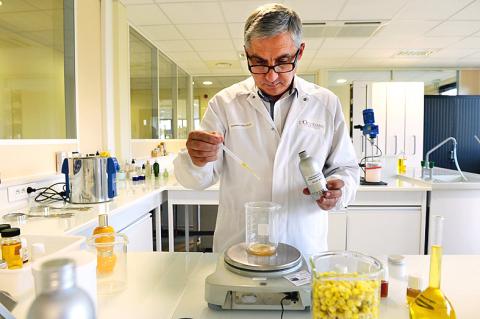
Photo: AFP
Each year about 16,000 visitors, including many from Asia, flock to L’Occitane’s manufacturing base in Manosque, a town of about 22,000 in the heart of Provence.
Baussan grew up reading the novels of Manosque’s favorite son, Jean Giono, who captured Provence’s natural beauty and rural charm.
The region, also the setting of British author Peter Mayle’s hits A Year in Provence and Hotel Pastis — is France’s second-ranked tourist draw after the Paris area, according to Eurostat.
Baussan set up the business in 1976 when he was just 24, having come across an old still that he bought “for half my meager salary,” he said.
“I wanted to revisit this tradition, and I went out into the countryside to distill rosemary,” said Baussan, now 61. “At the time there was a back-to-the-country movement. L’Occitane was forged in that.”
Baussan took the name from Occitan, an endangered Romance language, also known as Langue d’Oc, similar to Spain’s Catalan that is spoken by more than half a million mainly elderly people in southern France.
At first, using old “grandmother’s recipes,” he concocted mixtures of essential oils and sold them to herbalists’ shops.
Then a soapmaker taught him his know-how, and he opened his first shop selling lavender soap in 1981, followed by others, mainly in France.
By his own admission, Baussan is “closer to farmers than to the stock market.”
He left it to his Austrian business partner, Reinhold Geiger, to woo foreign markets, setting up outlets with their trademark ochre colors and tiled floors with wood and wrought-iron furnishing.
Today L’Occitane has 2,384 stores across the world, from New York to Hong Kong — where the company has been listed on the stock market since 2010.
However, success was not immediate.
“At first, people didn’t know us, it didn’t work at all. Then little by little we built a clientele,” Geiger said.
The group is now based in Luxembourg, with more than 7,000 direct employees worldwide.
It projects a production capacity of 20,000 tonnes and 150 million vials, tubs and tubes by 2017, compared with the current 12,000 tonnes and 65 million units, production director Jean-Luc Rohou said.
Ironically France, with its 132 stores, accounts for less than 8 percent of the group’s annual turnover of 1.04 billion euros (US$1.4 billion), far behind Japan’s 21 percent, while the Russian and Chinese markets are showing the fastest growth.
The raw materials — lavender, angelica, verbena, peonies, roses, juniper, almonds — abound in Provence, while Corsica provides “everlasting” flowers, prized for their anti-aging properties.
The yellow flower grows wild on the island and had never been domesticated, but is now being cultivated on eight farms over a total of 50 hectares under a program launched in 2004.
The company’s karite comes from much farther afield — from Burkina Faso in west Africa, where about 16,000 women harvest shea tree nuts to extract their butter, with L’Occitane buying the bulk of their output.
When Baussan started working with them 25 years ago they numbered only about 100.
L’Occitane helped build the women’s cooperatives to their current strength in a project that won kudos from the UN Development Program’s Growing Inclusive Markets initiative.
In a sign of L’Occitane’s growing internationalization, it launched a project in Brazil this year to produce a range made exclusively from local ingredients — one way to create a cheaper complement to the costlier “made in France” model.
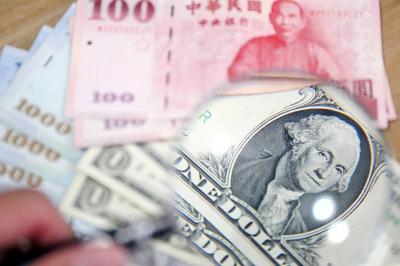
The US dollar was trading at NT$29.7 at 10am today on the Taipei Foreign Exchange, as the New Taiwan dollar gained NT$1.364 from the previous close last week. The NT dollar continued to rise today, after surging 3.07 percent on Friday. After opening at NT$30.91, the NT dollar gained more than NT$1 in just 15 minutes, briefly passing the NT$30 mark. Before the US Department of the Treasury's semi-annual currency report came out, expectations that the NT dollar would keep rising were already building. The NT dollar on Friday closed at NT$31.064, up by NT$0.953 — a 3.07 percent single-day gain. Today,
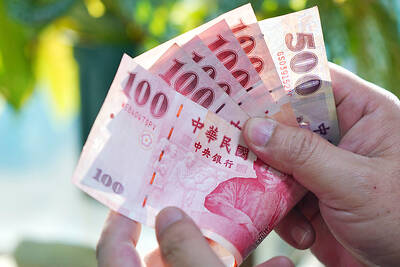
‘SHORT TERM’: The local currency would likely remain strong in the near term, driven by anticipated US trade pressure, capital inflows and expectations of a US Fed rate cut The US dollar is expected to fall below NT$30 in the near term, as traders anticipate increased pressure from Washington for Taiwan to allow the New Taiwan dollar to appreciate, Cathay United Bank (國泰世華銀行) chief economist Lin Chi-chao (林啟超) said. Following a sharp drop in the greenback against the NT dollar on Friday, Lin told the Central News Agency that the local currency is likely to remain strong in the short term, driven in part by market psychology surrounding anticipated US policy pressure. On Friday, the US dollar fell NT$0.953, or 3.07 percent, closing at NT$31.064 — its lowest level since Jan.
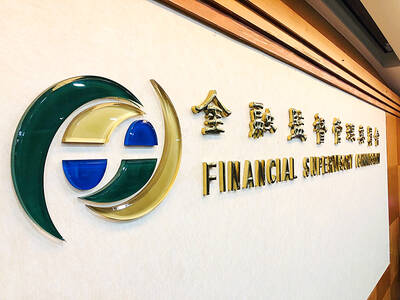
The Financial Supervisory Commission (FSC) yesterday met with some of the nation’s largest insurance companies as a skyrocketing New Taiwan dollar piles pressure on their hundreds of billions of dollars in US bond investments. The commission has asked some life insurance firms, among the biggest Asian holders of US debt, to discuss how the rapidly strengthening NT dollar has impacted their operations, people familiar with the matter said. The meeting took place as the NT dollar jumped as much as 5 percent yesterday, its biggest intraday gain in more than three decades. The local currency surged as exporters rushed to
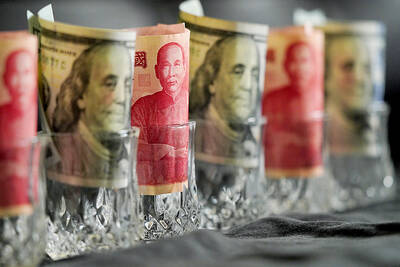
PRESSURE EXPECTED: The appreciation of the NT dollar reflected expectations that Washington would press Taiwan to boost its currency against the US dollar, dealers said Taiwan’s export-oriented semiconductor and auto part manufacturers are expecting their margins to be affected by large foreign exchange losses as the New Taiwan dollar continued to appreciate sharply against the US dollar yesterday. Among major semiconductor manufacturers, ASE Technology Holding Co (日月光), the world’s largest integrated circuit (IC) packaging and testing services provider, said that whenever the NT dollar rises NT$1 against the greenback, its gross margin is cut by about 1.5 percent. The NT dollar traded as strong as NT$29.59 per US dollar before trimming gains to close NT$0.919, or 2.96 percent, higher at NT$30.145 yesterday in Taipei trading